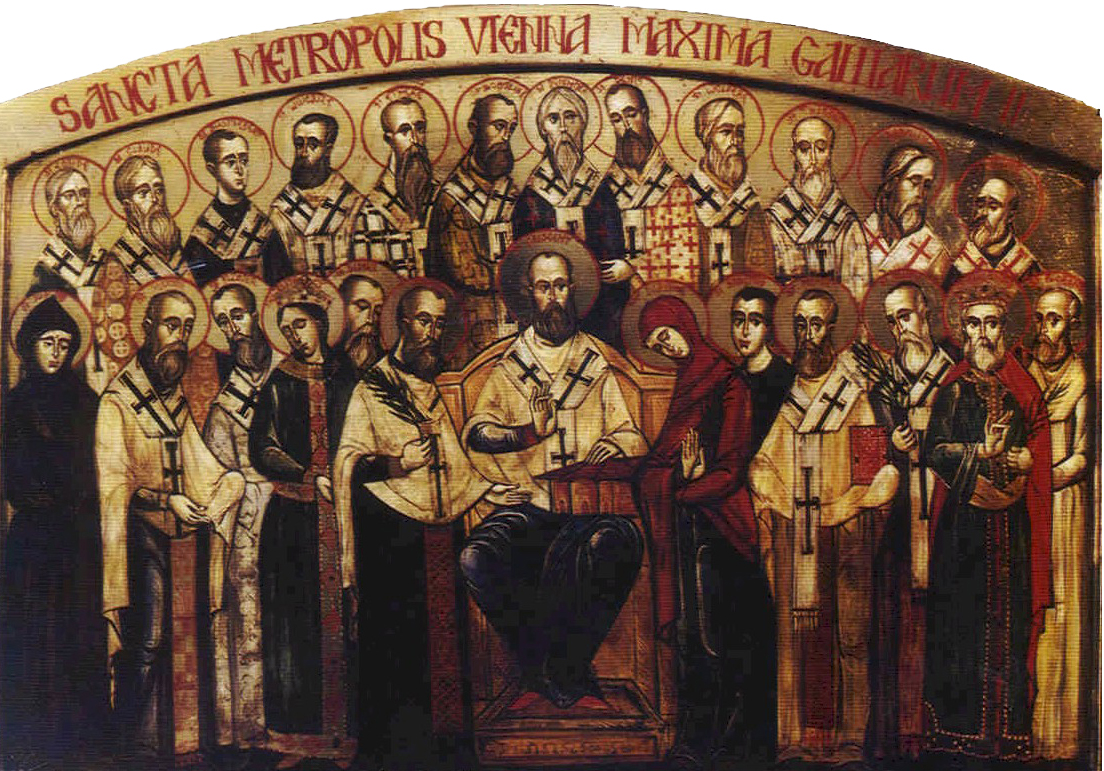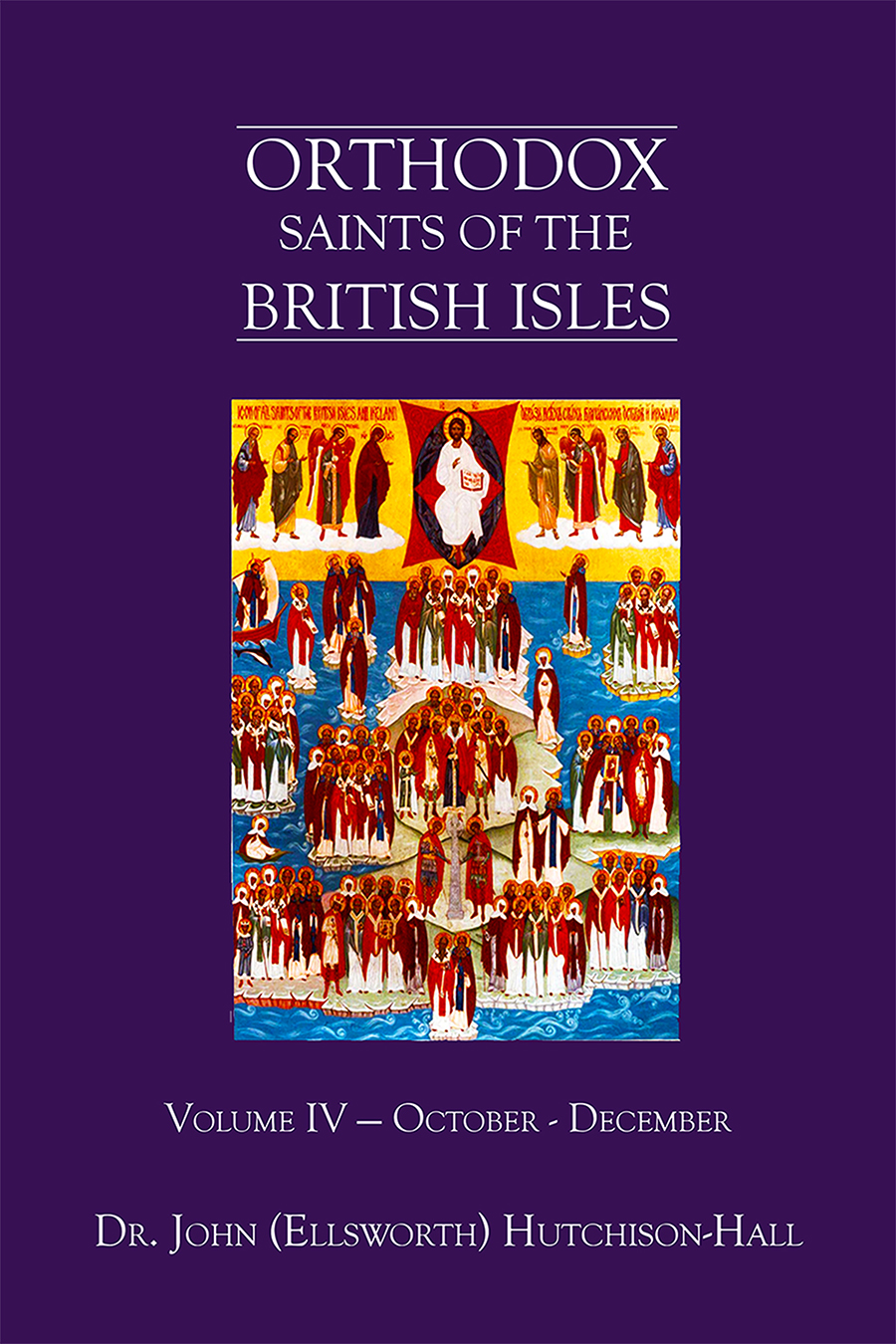
Orthodox Saints of the Pre-Schism
See of Rome
20th October (NS) — 7th October (OS) 2024
ADALGIS of NOVARA, a member of the court of Lothair I, King of the Franks (r. 814–855) and Holy Roman Emperor (r. 817–855) who was appointed to serve as Bishop of Novara in Piedmont (north-western Italy) from circa 830 until his repose circa 850. St. Adalgis is buried in the Basilica of San Gaudenzio in Novara.
AUGUSTUS of BOURGES, (Late Sixth Century), an abbot in Bourges (central France). St. Augustus was also a friend of St. Germanus of Paris (28th May). St. Augustus is best known for having discovered the relics of St. Ursinus of Bourges (9th November), the first Bishop of Bourges.
CYNOG (CANOG, CENNEUR), (Fifth Century), the eldest son of the great King St. Brychan of Brycheiniog (6th April), St. Cynog was martyred by Barbarians at Merthyr-Cynog (shrine of Cynog) in Powys, Wales circa 492, his relics are enshrined at Merthyr-Cynog.
DUBHTHACH (DUBTHACH, DUBTACH) of ARMAGH, (Sixth Century), There were two Abbot-Bishops of Armagh in Ulster by the name of Dubhthach. Dubhthach the First was the sixth Abbot-Bishop of Armagh, serving from 497 until his repose in 513. Dubhthach the Second (or Younger) served as the ninth Abbot-Bishop of Armagh for twelve years from 536 until his repose in 548. The Annals of the Four Masters only refer to Dubhthach the Second as a saint, however there is no other record extant of his veneration or Feast Day. The Book of Saints by the Benedictine Monks of St. Augustine at Ramsgate, England as well as several other contemporary listings of saints, list a feast date of 7th October.
HELANUS, (Sixth Century), along with six brothers and three sisters, St. Helanus travelled to France from Ireland, where they lived as hermits along the River Marne near Reims (north-eastern France). St. Helanus, who was a priest, served as de facto abbot of the small community, and ministered to the people of the surrounding area.
JUSTINA of PADUA, according to tradition St. Justina was a maiden who flourished during the Apostolic Age. She was martyred in Padua (Northern Italy) during the reign of either Nero (r. 54–68) or Domitian (r. 81–96).
MARCELLUS and APULEIUS, (First Century), the Roman Martyrology relates that SS. Marcellus and Apuleius were followers of Simon Magus who were converted after witnessing the miracles of the Apostle St. Peter (29th June). They were later martyred and buried outside the walls of Rome.
MARK (MARCUS), a Roman by birth, Pope St. Mark succeeded Pope St. Silvester (31st December), serving as the thirty-fourth Pope of Rome for only 263 days (18th January–7th October, 336). However, in that brief time the Liber Pontificalis, credits St. Mark with the founding of the Basilica of San Marco in Rome, and it is possible he founded a second basilica as well. St. Mark reposed on 7th October 336, of natural causes.
OSGYTH (OSYTH, OSITH), (Seventh Century), according to tradition St. Osgyth was the daughter of Frithwald (Frithuwold), a sub-king of Mercia and Wilburga, the daughter of the pagan King Penda of Mercia, and niece of St. Edith of Polesworth (15th July), and St. Eadburh of Bicester (18th July). She was raised by her aunt St. Edith of Polesworth at St. Edith’s monastery, or under the guidance of St. Modwenna of Burton (5th July), leading to St. Osgyth’s desire to become a monastic. However, her father betrothed her to Sigehere, King of the East Saxons (r. 663/4–c. 688) for political reasons. This union produced the future St. Offa (15th December), King of the East Saxons (r. c. 707–c. 709). In time, Sigehere acquiesced to St. Osgyth’s desire for the monastic life, and she founded an abbey at Chich, present-day St. Osyth, Essex, England, and served as its first Abbess. St. Osgyth was martyred by heathen Danes or other pirates circa 700.
PALLADIUS (PALLAIS, PALLADE) of SAINTES, the twelfth Bishop of Saintes (south- western France). St. Palladius served from circa 570–3 until his repose circa 596–600.
Get your copy of Orthodox Saints of the British Isles today.
Available at Amazon or your favourite e-bookstore.
ACCA of HEXHAM, known as one of the most learned bishops of his century, he was held in great esteem by St. Bede the Venerable (25th May) who described him as ‘great in the sight of God and man’. St. Acca began his monastic life as a disciple of SS. Bosa of York (9th March) and Wilfrid of York (12th October). During St. Wilfrid’s exile (circa 678–681), St. Acca served as a travelling companion to St. Wilfrid. Following their return to England, St. Acca served as Abbot of St. Andrew’s in Hexham (Northumberland), and in 709, succeeded his former master as Bishop of Hexham, serving that See until his repose circa 740.
ADERALD, the Archdeacon of Troyes (north-central France) who went lead a pilgrimage to the Holy Land. Returning with a surfeit of holy relics, he built the Priory of Saint-Sépulcre at Samblières (present-day Villacerf) on the outskirts of Troyes. St. Aderald reposed in 1004.
AIDAN of MAYO, a bishop in Co. Mayo, Ireland who reposed in 768, and of whom nothing further is known.
BERNARD of BAGNOREA, a native of Bagnorea, Lazio (central Italy) who served as Bishop of Vulcia in Tuscany (central Italy) in the late eighth century. St. Bernard reposed circa 800.
BRADAN and ORORA (CRORA), (Date Uncertain), nothing is known about SS. Bradan and Orora other than the existence of a Kirk Braddan (Church of St. Braddan) near Douglas, Isle of Man, and a reference made on a sixteenth century map to a church of St. Crora. There is also a tradition of their veneration on the Isle of Man.
CAPRASIUS of AGEN, a native of Agen in Aquitaine (south-western France), St. Caprasius initially went into hiding at the beginning of the Diocletianic Persecution (303–313). However, inspired by the courage shown by St. Foy of Conques (6th October), St. Caprasius came out of hiding, and openly proclaimed himself to be a Christian, and was subsequently beheaded in 303.
IRENE of TOMAR, a nun in Portugal, of whom nothing certain can be said with confidence. She is said to have been martyred by Visigoths circa 653. She is the patron saint of both Tomar and Santarém in Portugal.
MARTHA of COLOGNE, SAULA of COLOGNE, and COMPANIONS, (Fourth Century), martyrs with St. Ursula (21st October) in Cologne in the present-day German state of North Rhine-Westphalia.
MAXIMUS of AQUILA, a very devout and dedicated deacon in Aquila in the Abruzzo region of present-day Italy. He was tortured and then martyred by being thrown off a cliff circa 250, during the Decian Persecution (250–251). St. Maximus is one of the patron saints of L’Aquila Italy.
SINDULF of REIMS, a hermit in Aussonce near Reims (north-eastern France), who reposed in 660.
VITALIS of SALZBURG, Abbot of St. Peter’s Abbey (Stift Sankt Peter), and second Bishop of Salzburg. St. Vitalis succeeded St. Rupert of Salzburg (27th March) in both positions in 717 and continued until his repose in 745.
Prior to the Schism the Patriarchate of Rome was Orthodox, and fully in communion with the Orthodox Church. As Saint John of Shanghai and San Francisco +1966 said “The West was Orthodox for a thousand years, and her venerable Liturgy is far older than any of her heresies”.
Details of British Saints excerpted from Orthodox Saints of the British Isles.
Details of continental saints from these sources.
In many cases there are several spelling versions of the names of saints from the British Isles. I use the Oxford Dictionary of National Biography version as the primary version with the more prevalent version in parenthesis e.g. Ceadda (Chad) of Lichfield.

